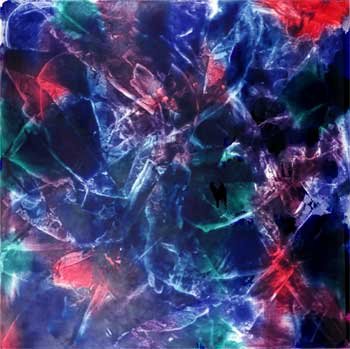Artist & Educator 1929-2018
Terence Netter
An American Jesuit priest, artist, educator, administrator who as a Jesuit was formed in the Spiritual Exercises of Ignatius of Loyola. This formation manifested itself throughout his lifetime on his intellectual life and on the canvas as an artist who searched for the reconciliation of the philosophical and theological thoughts that inspired him and the search for truth. It also inspired him as an educator in the classroom where he taught Aesthetics. His paintings are the closest he came to reconciling his angst as the canvas progressed further and further to the horizon capturing the mystery that Karl Rahner referred to as holy and stimulated by his theories of the horizon of being.
⇩
Upcoming
Paintings
Artist Statement
I began doing what I often call “Zenscapes” in 2006 in France where we have farmhouse in the Loire Valley. Hitherto I had been doing mostly paintings which were categorized as abstract expressionist “Action Paintings” – mostly large canvases with all-over design and no use of classical perspective. They were calculated to evoke a sense of drama and therefore of conflict. I quite suddenly decided I wanted to do work which evoked a sense of peace. To accomplish this I needed to create them with a new method and in a different way.
By 2006 I had become a devotee and practitioner of Zen Meditation. I had retired as Dean of the College of Fine Arts at Jacksonville University in 2005 and was experiencing inner peace in the peaceful surroundings of the Loire Valley. I decided to paint landscapes in a minimalist style to try to capture the special light of the region and invite the viewer to share the sense of peace I got when doing them by walking into them. I wanted them to be “seeds of contemplation,” providing opportunities for viewers to put aside mundane worries and preoccupations and get in contact with what Wordsworth called “The Great All.”
All paintings should take the eye for a walk, and these are meant to take the mind for a walk as well – a walk beyond the horizon to whatever lies beyond. The horizon of every vista in nature as well as in landscape painting symbolizes for me what the late, great Theologian, Karl Rahner, calls “The Horizon of Being” and reveals the fact that we somehow mysteriously know that there is a “more” beyond the horizon even though we cannot see it. This mysterious “More” is what inspires thought about the possibility of the existence of reality beyond the reach of our senses.
The paintings in the current show at the Woodward Gallery in New York were all done in France during the past two years. Although they were partly inspired by impressions I had in real places, they were done in my studio in our farmhouse in the Loire Valley – not en plein air. They express “emotions recollected in tranquility.” Hopefully they will have the power to evoke similar peace in the some viewers.



















